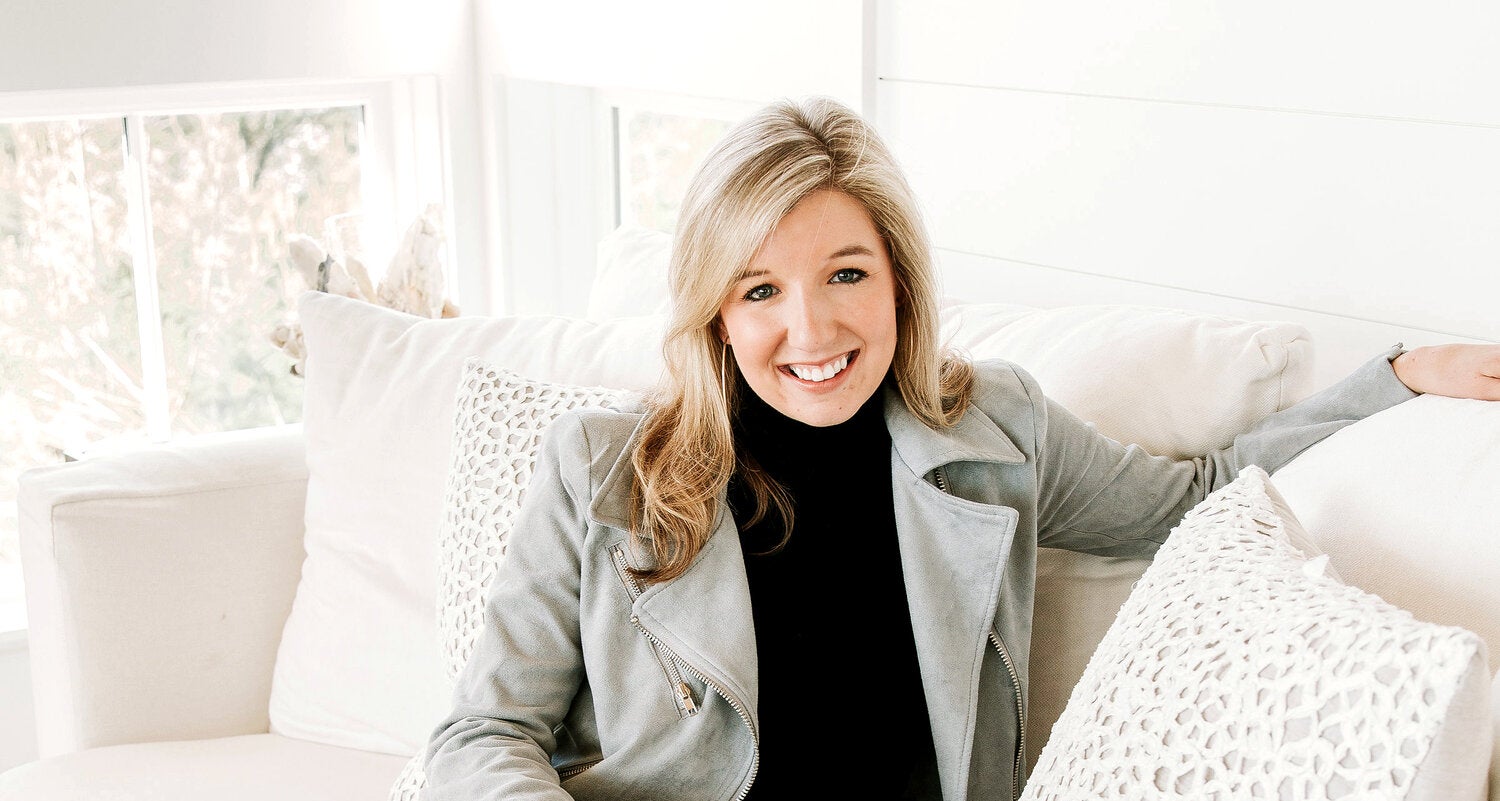The 50 States Project is a series of candid conversations with interior designers across the country about how they’ve built their businesses. This week, Percy, Mississippi–based designer Mary Clair Cumbaa tells us how her design degree helped her stand out when she launched her firm, why she opened a storefront to lock in better margins on product and how changing her website transformed the leads coming into the firm.
What drew you to design as a career path?
We had to take a career discovery class in the seventh grade, and as a part of the class, I shadowed an interior designer for the day. Although I didn’t really realize the scope of it until much later, I started to see what all went into it—that it wasn’t all just decorating and fun. I got to sit in on client meetings, and I still vividly remember the house we went to and did bookshelf styling. I took a lot from that little experience and my interest in it grew from there.
You pursued a design degree in college. What surprised you about getting a design education?
I didn’t realize that there was so much that you could do with the degree. There are so many aspects of design that most people don’t ever think about—so many industries and so many types of firms. I was always interested in residential design, but I knew when I entered college that residential was a very small part of the overall program that I was going to study. We did a lot of commercial work—there was a retail design studio and another for hospital design—but it laid such a good foundation for what I’m doing now. I don’t feel I could do what I’m doing now without the knowledge that I gained from working on those larger projects in college.
Were you able to get some residential experience, as well?
The summer after my junior year of college, I moved to New York to intern for Eric Cohler. I was in the D&D Building every day, and it taught me a lot about high-end residential. I still thought I might want to move to New York after graduation, but I was also interested in something a little closer to home, so I got an internship with Lauren Liess, who is in Virginia, right outside of Washington, D.C. The firm was small when I worked for her, which showed me that maybe [you don’t need a huge team, and] I could start doing some freelance on my own.
How did working for Eric and Lauren help you understand what you wanted for your own firm?
It helped me understand how to delegate different roles and duties—that’s something I still struggle with today, just because it is so hard to build a team that you can trust, but it did show me how to teach someone how to look for things, what to look for and where to look for them. At Eric’s firm, for example, he had his go-to vendors, so once you learned those brands and antiques sources—who to call and where to look—I picked up on the repetition of certain things, and it taught me to build relationships with certain vendors. When you do that, you can get better pricing. The more you order and the better relationship you have with your sales rep, the more perks and priority you might get. Besides, the relationship aspect of the business is my favorite part, whether it’s building relationships with clients or the vendors. I think it’s important to build strong relationships.
How do you start to build those deep relationships?
It’s about building a rapport at the beginning—thanking them for trusting me to come into their home and be a part of their life, and recognizing and acknowledging that it is a financial commitment and an investment for them. I want them to know that it’s my honor to be able to help them make their home more comfortable.
Beyond that, I really want to get to know them. I have a questionnaire I send over at the beginning of every design project that gets deep into the nitty-gritty about their preferences. It’s not about me, it’s about them. It’s their home and their life, so I want to make sure that what I’m doing fits their family. I feel that my role as a designer is to create it and make it beautiful based on their needs and preferences. Here in Mississippi, most of my clients have pretty traditional things already, and most of them do gravitate toward a more traditional look. They may have inherited a traditional piece here and there, and so I want to respect that. Would it be easier for me to come in and start with a clean slate? Of course. But that’s not my reality here. So I focus on mixing modern and traditional to create a balance, and I think that is what sets me apart here.
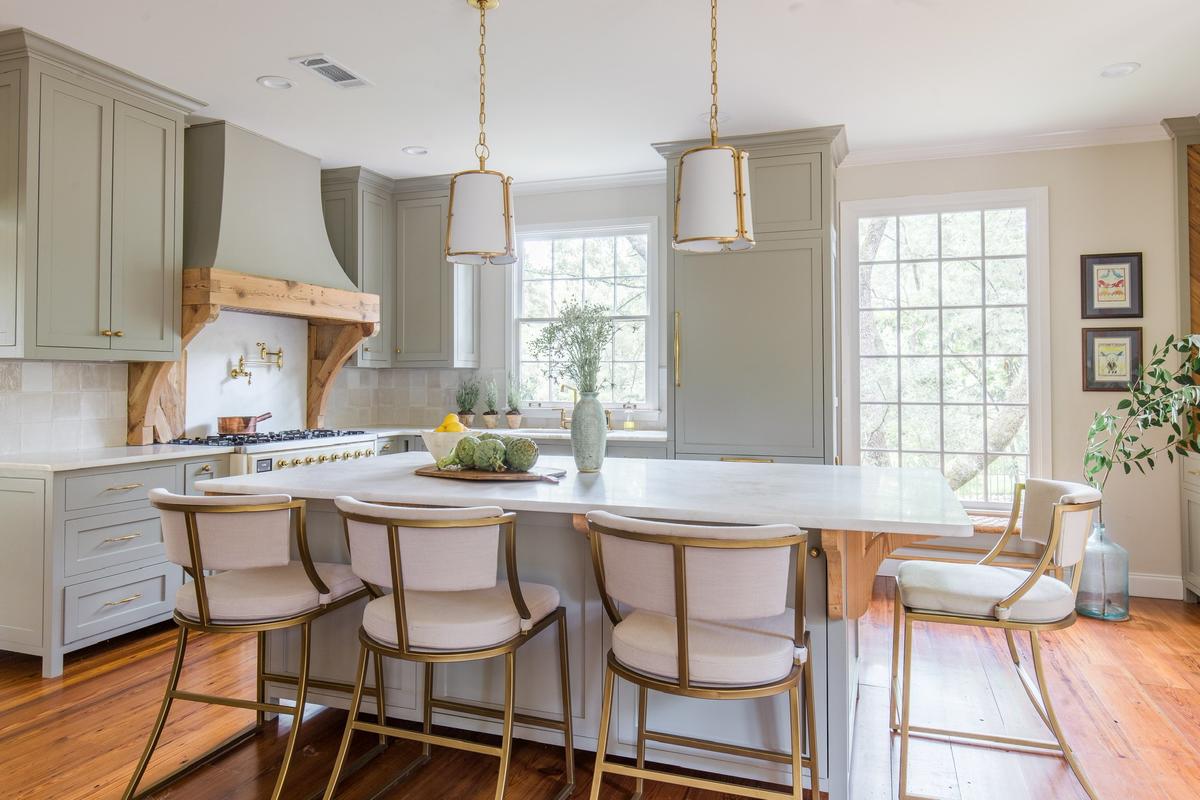
What brought you back to Mississippi?
After D.C., I ended up moving to Birmingham, Alabama, where I did AutoCAD drafting for a small residential architecture firm. It was basic design assistant work—putting together presentations and doing some renderings and Photoshop. I worked there for a year. By that time, I had gotten engaged to my now-husband. We thought we would get married, move back to D.C. for five to 10 years, and then come back to Mississippi so that he could take over his family’s farm, because he’s a fifth-generation farmer. That was the plan, but it was fast-tracked, and we moved back to Mississippi for family reasons: His mother passed away and his father was terminally ill, and he was going to take over the family business right away.
Did you look for a design job in Mississippi, or did you start your own firm right away?
I started looking around in Jackson, which is where I grew up—when we first moved, I thought we would live in Jackson and my husband would drive an hour and a half to get to the farm. I started doing some AutoCAD drafting work for Betsey Mosby just as she went out on her own and her firm really took off, but it was a short-lived thing because I quickly realized that we were probably going to move to the Delta. Once we moved out here, I worked in retail a little bit, but that didn’t really work out—I had to work every Saturday, and I was like, “I don’t want to be doing this.” My husband encouraged me to take a little break—and that’s when I started getting little jobs here and there. Looking back at it, it’s like, “That was totally all meant to be, because I feel I was born to have my own business.” I work better being on my own time frame in my own schedule. Betsey let me order furniture through her, and then I would mark it up, and that’s how I started really building a business.
What’s different about working in the Mississippi Delta?
The Delta is probably one of the most rural areas in the country. There’s no middle class here—it’s either upper class or extreme poverty—which was so different from Jackson, where I grew up. Here in the Delta, you either have a lot of excess money to spend on your home or you don’t. And everybody here has a “designer.” When I moved here, having a design degree was unheard of. People were like, “Wow, you’re educated in it? I want to renovate my bedroom. Can you draw up a floor plan for me?” I started doing a few small projects here and there, would get professional photography done after almost every project, and it just grew and grew and grew.
I started getting projects further out at existing clients’ second homes, or clients who told their friends and family members about me, so it has turned into a big business for me, which I’m really grateful for. I always thought I would be 40 or 50 when I started doing this on my own. I never thought I would be able to do it at 29.
How do you decide what you say yes to, and how do you vet your clients?
That is definitely an issue for me, especially because I don’t want to hurt anyone’s feelings. I take about five big projects a year—that’s new construction, from the ground up, where I’m drawing out every detail—and then around 10 major decoration projects. To start, I always point prospective clients to my website to fill out the inquiry form. As part of that form, they have to select a budget for the project from a dropdown menu. The options start at $50,000 and go up to “more than $400,000,” which has been a deterrent, I think, for people who know they can’t start off there.
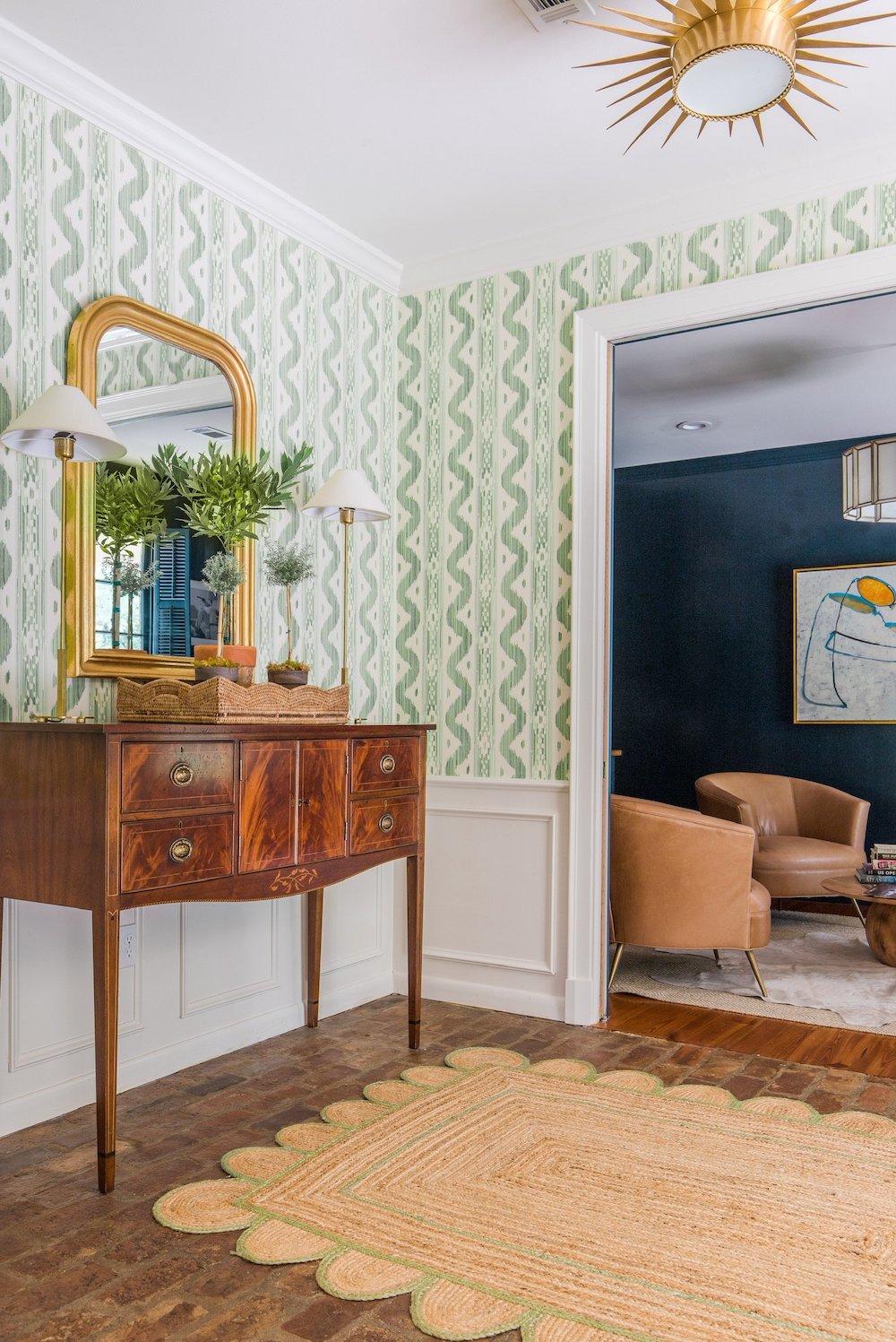
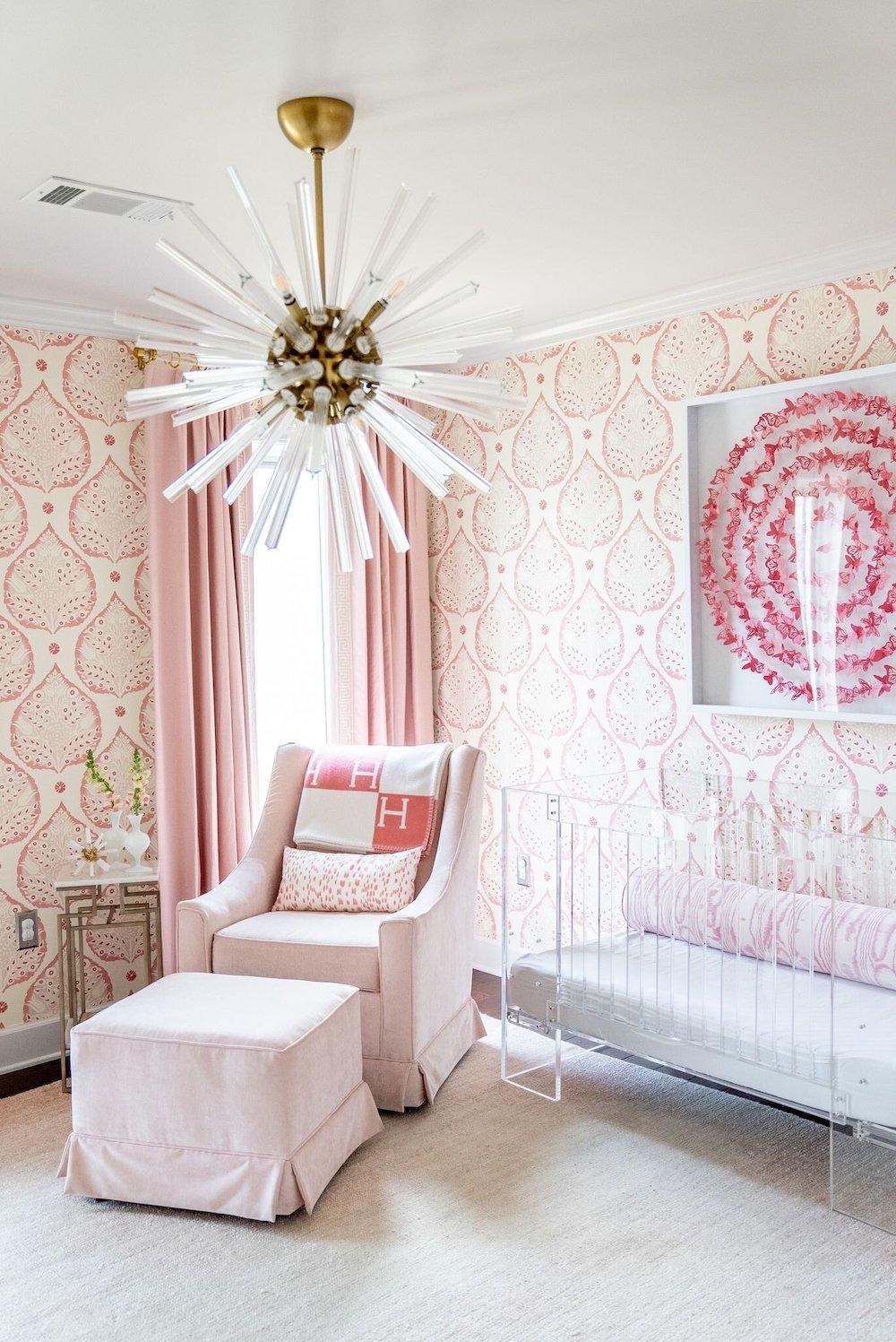
What does your team look like?
I have an office manager who does all of my invoicing and billing, and I hired an assistant last fall who does a lot for me. I’ve also had an intern for the past few years who does a lot of drafting and sourcing for me now. She’s a junior in college, doing the same program that I did, so it’s been nice to mentor her. It took me a long time to feel like I could trust people to see what’s in my brain, but I feel like I’m in a really good spot now with the team.
I also recently opened a retail store, which is about an hour and a half away from where I live, so I have an amazing full-time manager there to run it and take care of it, as well as an assistant manager and a team of retail employees.
When did you start building your team?
I started working with The Dove Agency at the beginning of last year. They work with designers all over the country, which appealed to me, because I feel like I’m on an island working here. They were fascinated that I don’t have a lot of competition here, and that I was doing everything myself. After they analyzed my business, they were like, “If you could get someone to help you enter all of the details and information into your design management system, that’s going to make your life so much easier.” Hiring them to advise me really motivated me to take that next step.
How does being on that island, so to speak, impact the way you think about your firm’s opportunities for growth?
Last year, I reached the point where I realized that in order to really grow, I was going to have to grow outside of the region that I’m in. That’s why I decided to open my store in Starkville, which is another very untouched region on the eastern side of the state. It’s a college town—it’s where I went to college, at Mississippi State—and my family has a game-day house there, so we’re there all the time, and I had a few clients there. Because I was already back and forth to the area pretty frequently, it worked out for me to have a location there. I knew that it was going to take getting out of my little bubble in the Delta to grow my business, and that’s what I’ve been able to do.
So is the role of the store to convert retail shoppers into design clients, then, and help you grow a client base in a new part of the state?
It’s actually the opposite. For me, it was a way for people to have access to what I can get, but not have to reach out to me for it. I could still sell to these people without selling my services, too. I can also get much better pricing on many of the lines I carry with a storefront. I had the volume of orders from my design business alone, but certain vendors only let you get to the level if you have a store, so it just made sense for me to do that.
There are some people there that I work with on the design side—there’s a condominium unit right next door to my store that I use almost like a showroom, where I have four or five vignettes set up with sofas and chairs and art. Clients can come walk in and buy the whole vignette, and it’ll be delivered. And I’ve found that second homes are a good market because if someone has the money to spend on the second home, they’re going to have the money to decorate it. Starkville is really on the cutting edge of the second-home growth in the state, and I wanted to capitalize on that.
How hands-on are you in the store’s day-to-day operations?
I’m physically there about every other week. I was doing the photo shoot in Starkville yesterday morning, and then I spent a good five hours totally restyling the store. When I’m there, it doesn’t feel like work to me—I get to be so creative and do it exactly how I want it to look.
How has having the store changed the way you shop for your design projects?
I definitely gravitate toward certain vendors that I carry in the store. For example, I am one of the top 10 accounts in the country for Jaipur Rugs and I get the best pricing with them, so my margins are really good on those products. I stock a lot of their rugs in the store, and then I know that if I can use them in a design project, I can give the client a little bit of a deal and I’m still getting a good margin, so it’s a win-win.
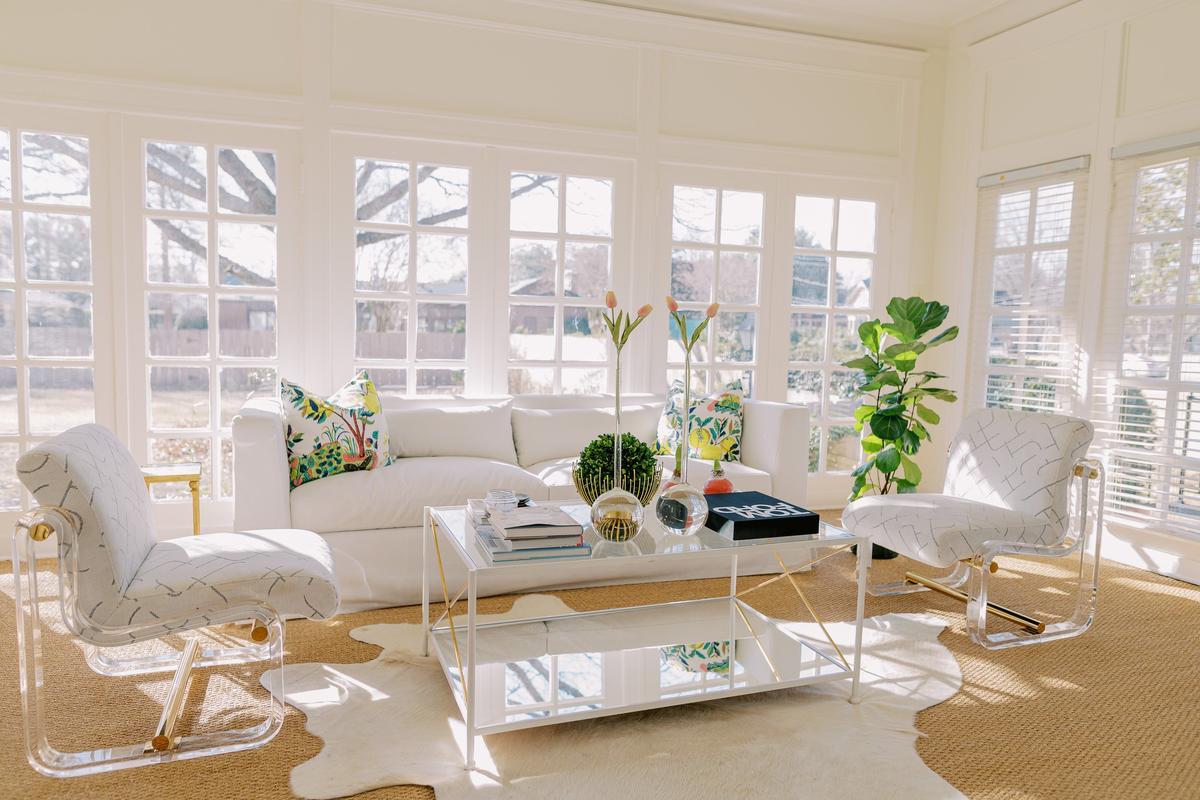
For your design work, how have you approached the billing piece of it?
I have an hourly rate, and then I charge a markup on product. But where I live, I found that a lot of people aren’t used to paying for design services. I do think that has helped me, though, because it has helped me put myself on a different playing field than other decorators in the area.
Because saying, “You don’t get this for free,” makes people think differently about your work?
Yes—I have a design degree and I’m not just doing this for fun. I had a baby last year, and that changed everything for me too. It helped me realize that my time is valuable, and it’s worth something. I think it took me a while to really believe that.
Did you have a moment where you finally felt like you were making what you’re worth?
At the beginning of this year, I started really implementing some changes. Anyone who fills out the inquiry form on the website gets an email with information about what it costs to work with me. It’s professionally written-out, and they’re either going to say yes or no. So far, everyone has been like, “OK, that’s fine.” I was so afraid of confrontation—of people saying, “You’re going to charge how much?”—but they don’t bat an eye. I have a certain deposit now that clients have to send in, too, and everyone is just like, “OK, where do I send it?” The people who really want it haven’t argued with it, which verified for me I am doing the right thing.
What is the biggest thing you know now that you wish you had known when you started your business?
I used to care so much about my reputation and what people thought. But there are things that you just cannot control. I used to get so upset about little things, but I’ve now accepted that I can’t control everything, and that it’s OK to tell the client, “I’m so sorry this happened. This was totally out of my control, but I’ll do my best to make it right for you.” I wish I could go back and tell myself that there’s probably going to be something that happens on every single project that you can’t control and you just don’t need to get worked out about it.
You mentioned earlier that you professionally photographed most of your early jobs as you were building your business. Why was that so important to you?
It was all for social media. I saw some designers doing it, and I saw the difference that it made in how they could market themselves. Image is everything these days. I know some designers who do amazing things, but they haven’t caught on to the digital aspect of it and don’t know how to make their work come across digitally. I started really looking at how other designers were documenting their work and how they were styling it, and I realized that if I put some flowers in here and maybe turned the chair a certain angle, it made this room look so different on camera—in a good way.
Do you get business from social media?
Almost everyone who fills out the inquiry form says, “I follow you on Instagram, and I love your work.” They feel they have a relationship with me already, just from following me. Sometimes people will say things like, “I just loved that project that you did with the green door.” And I’m like, “How did you remember that? It was just something I posted on my Stories.”
What does success look like to you?
I know it’s impossible to make everyone happy, but at the end of the day, making the client comfortable and able to live a better life because of what I’ve done for them is success to me. I used to beat myself up—thinking that clients were unhappy with me because I hadn’t answered an email or they’re still waiting on this product. But at the end of the day, I have to remember that means that they value me. If they are wanting to hear my response, or if they are waiting for an item and looking for it, that means that they’re anticipating it. I have to look at the positives instead of the negatives. And especially since I’ve grown my team, I’ve been able to breathe a little more, look at the bigger picture and realize more of what success looks like.
To learn more about Mary Clair Cumbaa, visit her website or find her on Instagram.
















